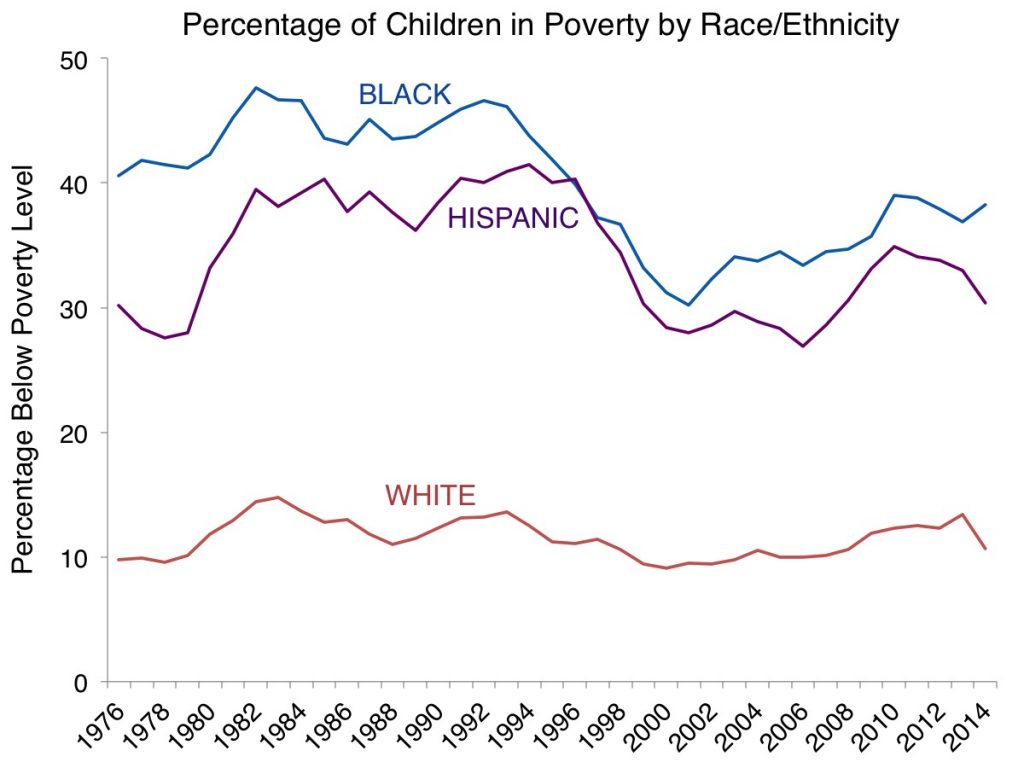
Data: U.S. Census Bureau, Income and Poverty in the United States: 2014
Now, let’s look at the percentage of children in poverty, between the years 1976 and 2014. The percentage of children living below the national poverty level is on the vertical axis. The years between 1976 and 2014 are on the horizontal axis. The blue line represents the percentage of Black children living in poverty each year. The purple line represents the percentage of Hispanic children living in poverty. The red line is the percentage of White children living in poverty. In 2014, about 11% of White children were living in poverty. But about 38% of Black children and 30% of Hispanic children were living in poverty. Three times as many Black and Hispanic children live in poverty as White children.
-
- Bias
- the belief that some people or ideas are better than others, usually resulting in unfair treatment
- Biological race
- physical racial features such as skin color, hair textures, and facial features
- Explicit racism/bias
- racism that is plainly expressed through words and or actions
- Implicit racism/bias
- racism that hides in our unconscious biases and gets expressed in our actions
- Racism
- the beliefs and practices that uphold and reinforce inequalities based on race
- Social identity
- a person’s sense of self that is based on group membership
- Social race
- The social norms, attitudes, beliefs and behaviors that accompany racial groups
- Systemic racism
- policies, practices, and laws that reinforce social inequalities by discriminating against groups of people, either directly or indirectly, and limiting their rights